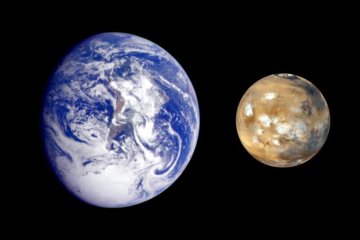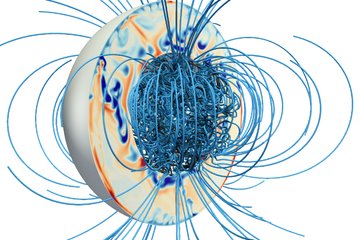All genres
1.
Journal Article
Asteroseismology of evolved stars to constrain the internal transport of angular momentum. VI. Testing a parametric formulation for the azimuthal magneto-rotational instability. Astronomy and Astrophysics 673, p. A110 (2023)
2.
Journal Article
KIC 7955301: A hierarchical triple system with eclipse timing variations and an oscillating red giant. Astronomy and Astrophysics 668, p. A173 (2022)
3.
Journal Article
Spectroscopic and seismic analysis of red giants in eclipsing binaries discovered by Kepler. Astronomy and Astrophysics 648, A113 (2021)
4.
Journal Article
Stellar evolution models with entropy-calibrated mixing-length parameter: application to red giants. Monthly Notices of the Royal Astronomical Society 504 (3), pp. 3128 - 3138 (2021)
5.
Journal Article
The Aarhus red giants challenge: II. Stellar oscillations in the red giant branch phase. Astronomy and Astrophysics 635, A165 (2020)
6.
Journal Article
Seismic evidence for near solid-body rotation in two Kepler subgiants and implications for angular momentum transport. Astronomy and Astrophysics 641, A117 (2020)
7.
Journal Article
Active red giants: close binaries versus single rapid rotators. Astronomy and Astrophysics 639, A63 (2020)
8.
Journal Article
A Knee-Point in the Rotation-Activity Scaling of Late-type Stars with a Connection to Dynamo Transitions. (submitted)
9.
Journal Article
Common dynamo scaling in slowly rotating young and evolved stars. Nature astronomy 4, pp. 658 - 662 (2020)
10.
Journal Article
The Aarhus red giants challenge: I. Stellar structures in the red giant branch phase. Astronomy and Astrophysics 635, A164 (2020)
11.
Journal Article
Competing effect of wind braking and interior coupling in the rotational evolution of solar-like stars. Astronomy and Astrophysics 636, A76 (2020)
12.
Journal Article
Asteroseismology of evolved stars to constrain the internal transport of angular momentum: I. Efficiency of transport during the subgiant phase. Astronomy and Astrophysics 621, A66 (2019)
13.
Journal Article
Evidence of New Magnetic Transitions in Late-type Dwarfs from Gaia DR2. The Astrophysical Journal 877 (2), 157 (2019)
14.
Journal Article
Testing the entropy calibration of the radii of cool stars: models of α Centauri A and B. Monthly Notices of the Royal Astronomical Society 489 (4), pp. 4712 - 4720 (2019)
15.
Journal Article
Solar radius and luminosity variations induced by the internal dynamo magnetic fields. Astronomische Nachrichten 339 (7-8), pp. 545 - 558 (2018)
16.
Journal Article
Improved Calibration of the Radii of Cool Stars Based on 3D Simulations of Convection: Implications for the Solar Model. The Astrophysical Journal 869 (2), 135 (2018)











